The U.S. economy and the promo supply chain are facing a massively consequential deadline.
If the International Longshoremen’s Association (ILA) does not vote to approve a new contract by the time its current contract expires Monday, then it has made its intentions clear that East Coast ports ranging from the Canadian border down to and including the Gulf Coast will strike, starting Tuesday, October 1.
The increasing possibility, which has been simmering since earlier this summer, has businesses across nearly all industries scrambling to figure out how to handle such a large work stoppage.
- The most significant sticking points for the union are wage increases and a cap on the ports’ use of automation, according to insiders.
John Janson, vice president of global supply chain for SanMar – PPAI 100’s No. 1 supplier, which accounted for nearly $4 billion in revenue in 2023 – told PPAI Media that, if a resolution isn’t reached, the ramifications will extend far beyond just the promo industry.
“It would have a catastrophic effect on the overall U.S. economy,” Janson says.
- If the affected ports were to close, it would impact 43% of U.S. imports.
- Sea Intelligence estimates the ports to account for $3.7 billion per day.
Progress on negotiations has not been promising this week, as the ports, represented by the United States Maritime Alliance, and the ILA have made contradicting statements about the other’s willingness to readily bargain in good faith.
“My I.L.A. members are not going to accept these insulting offers that are a joke considering the work my I.L.A. longshore workers perform, and the billion-dollar profits the companies make off the backs of their labor,” Harold J. Daggett, the union’s president, said in a statement on Monday.
As the strike becomes increasingly more realistic, a number of East Coast ports, including New York, New Jersey and Houston, have provided updates about what a work stoppage would mean for their immediate logistics and services.
Promo’s Perspective
Last year, the International Longshore and Warehouse Union (ILWU) managed to ratify a six-year contract, narrowly avoiding a similarly costly work stoppage. The West Coast ports will be open and operating at full strength in October, regardless of what happens on the other side of the country, but Janson says that its too late for any company that is just now thinking about shifting their plans for imports.
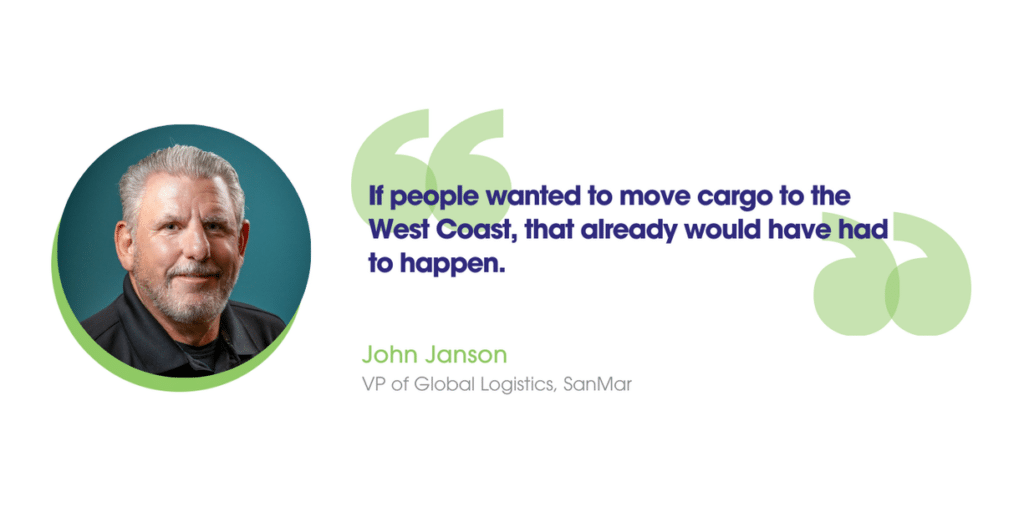
“If people wanted to move cargo to the West Coast, that already would have had to happen,” Janson says.
- Ports in Long Beach and Los Angeles have also said that they are currently handling a volume of containers that rivals the shipping influx in 2021.
Given this precariousness, many promo suppliers – and their distributor partners – may be at the mercy of the ILA negotiations and the residual effects of a potential strike.
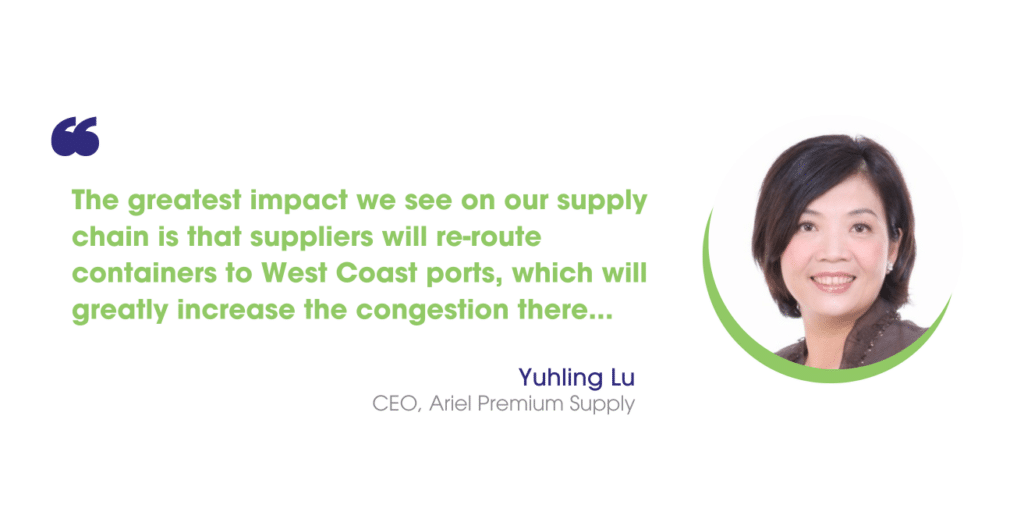
“It’s another major situation compounding on top of other dynamics, like continued rising container costs, the diversion of shipping around the Middle East and other logistical concerns,” says Yuhling Lu, CEO of Ariel Premium Supply, PPAI 100’s No. 17 supplier.
“The greatest impact we see on our supply chain is that suppliers will re-route containers to West Coast ports, which will greatly increase the congestion there, creating delays and almost guaranteeing higher unloading and transit costs. Plus, we’ll have to contend with possible limited availability of train and truck trailer carriers.”
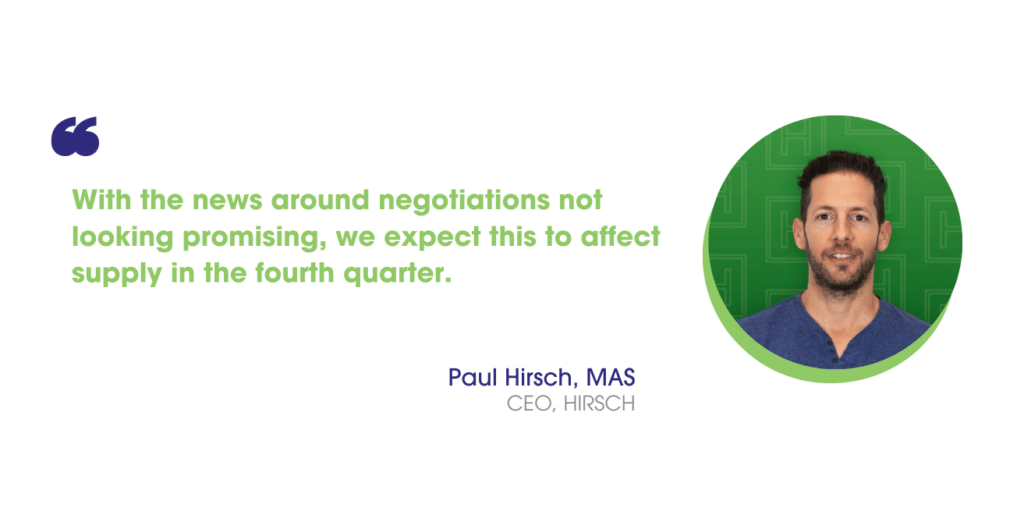
While Lu maintains that Ariel has enough inventory to weather the potential logistics storm, Paul Hirsch, MAS, CEO of HIRSCH – PPAI 100’s No. 20 supplier – isn’t feeling as optimistic.
“We’ve been keeping a close eye on the possible strike and have made some proactive efforts to try and minimize disruption,” Hirsch says, “but with the news around negotiations not looking promising, we expect this to affect supply in the fourth quarter.”
Trevor Gnesin, CEO of Logomark – the No. 14 supplier in the PPAI 100 – shares Lu’s concern about congestion at West Coast ports.
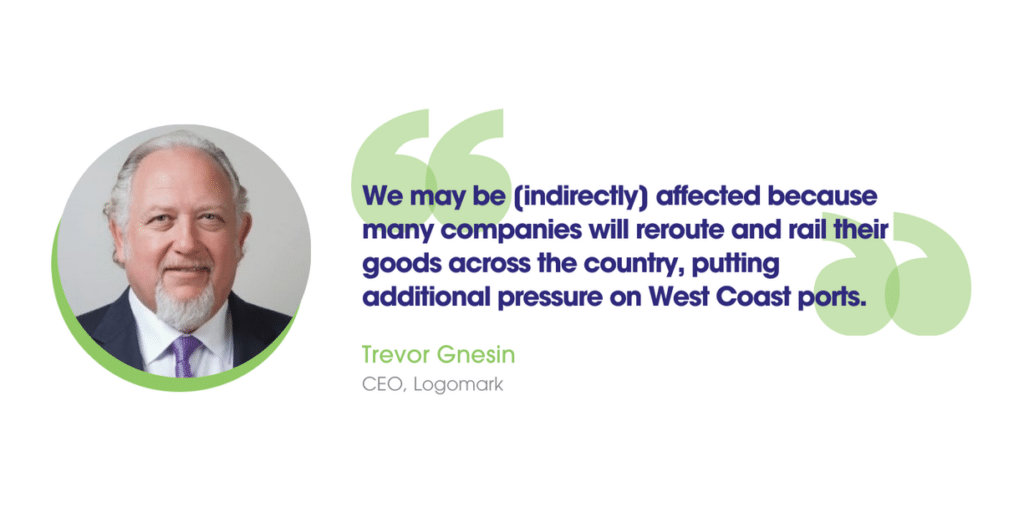
“We may be [indirectly] affected because many companies will reroute and rail their goods across the country, putting additional pressure on West Coast ports,” Gnesin says.
Gemline – the No. 11 supplier in the PPAI 100 – has already adopted that strategy, according to Tim Behling, vice president of supply chain at Gemline.
“Our proactive measures have positioned us well to navigate potential disruptions and continue providing excellent service to our customers,” Behling says.
In addition to shifting some shipments to West Coast ports, Gemline has been sourcing more product domestically from select retail brand partners that carry heavy inventories and pulling forward shipments that were originally scheduled for September/October to ensure that the firm has ample inventory to meet customer needs in Q4.
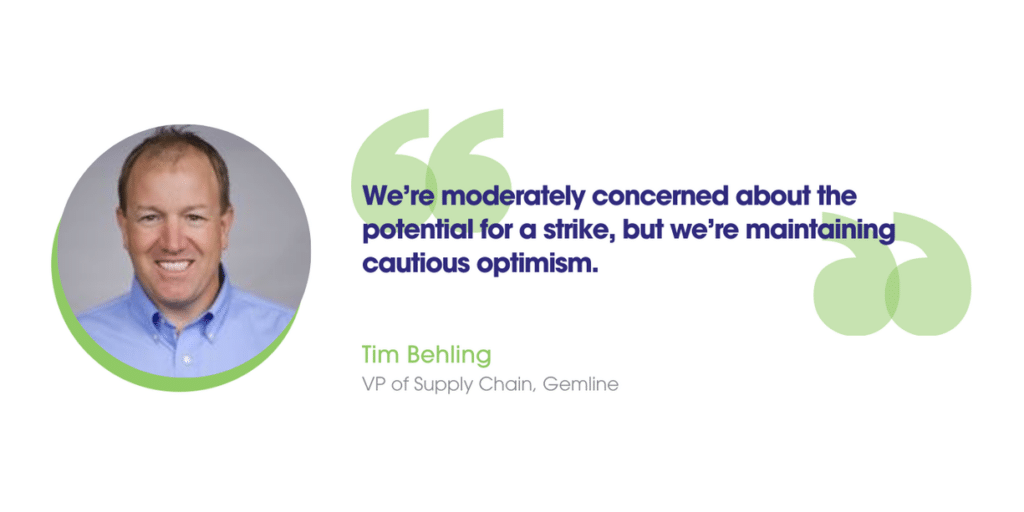
“We’re moderately concerned about the potential for a strike, but we’re maintaining cautious optimism,” Behling says.
Jose Gomez, president and CEO of Edwards Garments, PPAI 100’s No. 19 supplier, says that while a port strike is a serious obstacle to the promo industry, Edwards is well-positioned for such an event.
“We have neither the highly seasonal demand nor the highly holiday-related product assortment that others in retail and promo experience,” Gomez says. “We have safety stocks in place and the diversity of our sourcing base provides multiple other entry points for our products. Therefore, we don’t believe a temporary stop or delay will have major impact on us.”
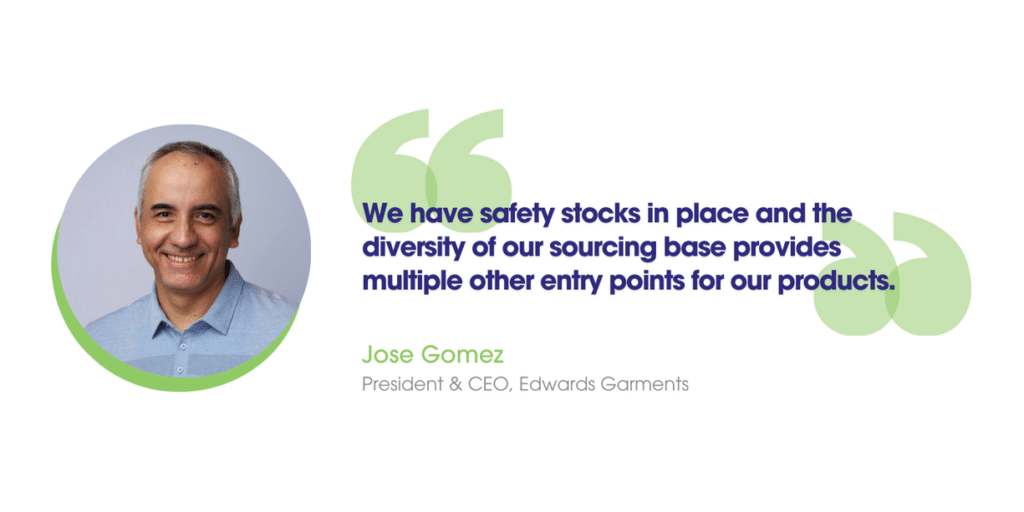
Importing the majority of its products from China, Ball Pro, PPAI 100’s No. 39 supplier, is another promo firm that relies upon West Coast ports.
“The only item that comes from East and Gulf Coast ports is our hockey pucks, and we’re working with [that factory], so it shouldn’t affect us much,” says Adam Hanson, president of Ball Pro.
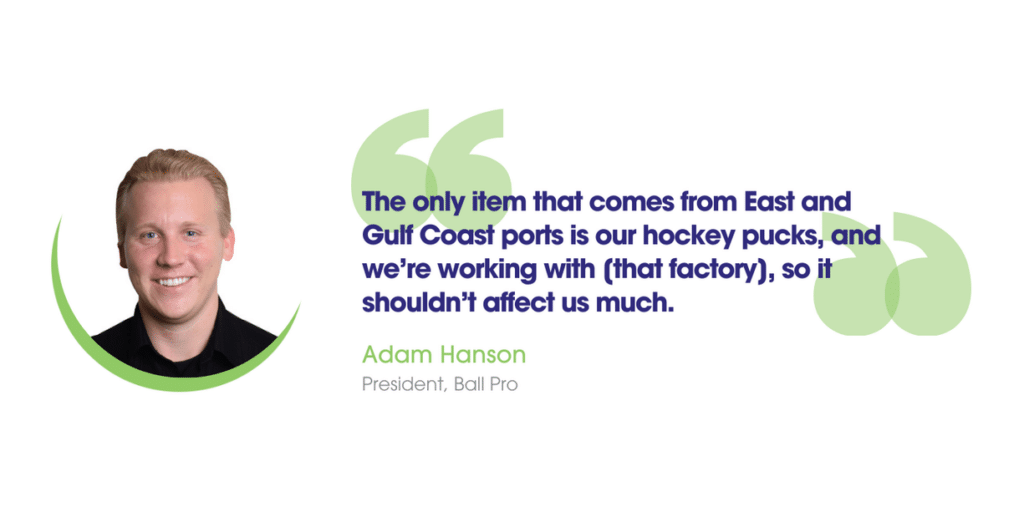
- Beyond direct and immediate impact, it is possible that the entire promo industry would be affected by the ramifications of a prolonged strike.
- Sea Intelligence suggests even just one day of work stoppage would cause 5-7 days of slowdowns, and a strike lasting one week would result in a slowdown that wouldn’t be cleared up until nearly Thanksgiving.
- The domino effect of this would have consequences for the supply chain and, ultimately, the economy, quite possibly affecting the budgets of promo clients.
What Happens Next?
Janson says that SanMar has closely monitored the situation through its sources in both the carrier and port spaces, and increased tension over the coming weeks is beginning to look likely.
“The message that we continue to hear is that it’s going to continue to get loud, but it will probably get settled close to the timeframe that it’s due, or if there is a strike, it will go no further than one or two days because the federal government will almost have to step in,” Janson says.
- The U.S. government would have an avenue to step in through what is known as the Taft-Hartley Act, which allows the government to force union workers back to work when it’s deemed sufficiently necessary for the good of the country.
- A strike would put the White House in a difficult position, as President Joe Biden has made statements and gestures during his term to appear as a union-friendly president who strongly favors letting such issues be resolved through collective bargaining.
- The Biden administration told CNBC, “We’ve never invoked Taft-Hartley to break a strike and are not considering doing so now.”
In a speech, Daggett made clear that the union members were fully prepared to strike and that implementing the Taft-Hartley Act wouldn’t be a long-term solution to work stoppage relative to meeting the union’s demands. Janson noted that Daggett is nearing retirement and that he may be more willing to go the distance in a standoff with the ports as a symbol of toughness for his legacy.
- Along with the West Coast port labor negotiations, last year also saw UPS come precariously close to a consequential strike that was averted at nearly the last hour.
- Janson noted that, while he sees similarities between those two situations and the current scenario on the East Coast, the U.S. government was involved, at least with the West Coast port negotiations, much earlier in the process, which may have had a considerable impact on the eventual resolution.
Still, Janson says SanMar’s sources were not panicking as of mid-September.
“We’re not seeing any of the carriers take action. They’re still sending vessels. They aren’t delaying vessels coming into ports,” Janson says. “We aren’t seeing ports take major contingency actions.
“The closer it gets the more news is going to break on it. At the end of the day, I think the sides will come together and work out an agreement.”


